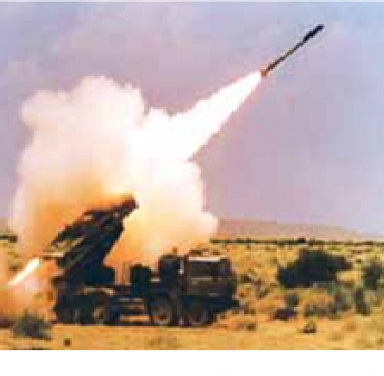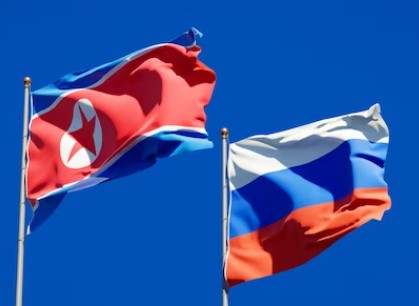The Indian space market, currently valued at $8 billion, is growing at a CAGR of 4 percent, outpacing the global average of 2 percent.
Further, with its strategic growth trajectory and support from the government and private sector, India’s space economy could reach $40 billion by 2040.
This growth is currently being driven by India’s investments in plans for a space station, human lunar mission, and defence applications; India’s affordability and proven capability in satellite/launch vehicle manufacturing, making it a favoured destination for global satellite operations
It would not be wrong to say that India’s space program stands out as one of the most cost-effective in the world.
The country has earned worldwide recognition for launching lunar probes, building satellites, ferrying foreign satellites up and has even succeeded in reaching Mars.
Noteworthy, India has two operational launch vehicles: Geosynchronous Satellite Launch Vehicle (GSLV) and Polar Satellite Launch Vehicle (PSLV). The number of launches undertaken by Indian Space Research Organisation (ISRO) during the last eight years i.e., from 2015 to 2022 is as follows: *
2015: 5 launches (4 PSLV & 1 GSLV)
2016: 9 launches (6 PSLV, 1 GSLV, 1 Scramjet Engine TD & 1 RLV TD)
2017: 5 launches (3 PSLV & 2 GSLV)
2018: 7 launches (4 PSLV & 3 GSLV)
2019: 6 launches (5 PSLV & 1 GSLV)
2020: 2 launches (2 PSLV)
2021: 2 launches (1 PSLV & 1 GSLV)
2022: 5 launches (5 PSLV)
Financial Support by Government
The Indian Government has been allocating higher budgetary allocations for Indian Space programme which will be utilised towards meeting the future challenges and space preparedness.
The total budgetary allocation for FY 2023-24 towards the Department of Space is Rs 12543.91 Crores.
Further, the Government has set up the Indian National Space Promotion and Authorization Centre (IN-SPACe) as a single-window agency for promotion and authorization of space activities. The budget allocations for IN-SPACe:
2021-22: Rs. 10 Cr
2022-23: Rs. 33 Cr
2023-24: Rs. 95 Cr
Reasons to Invest
- ISRO and European Space Agency (ESA) have enhanced their cooperation from earth observation and space exploration domains to other areas. Cooperative documents were signed for Network and Operations Cross-support and also for ESA’s ground station support for ISRO’s Chandrayaan-3 and Aditya-L1 missions.
- Till date, ISRO/DOS and India have signed space cooperative documents with space agencies of 61 countries and 5 multinational bodies. *With a greater focus on developmental missions, the safety and quality teams worked towards the certification, quality assurance, and safety aspects of novel technologies for the Re-usable Launch Vehicle - Landing Experiment (RLV-LEX) and the first developmental flight of a Small Satellite Launch Vehicle (SSLV D1).
- ISRO successfully demonstrated new technology with Inflatable Aerodynamic Decelerator (IAD) – a game changer with multiple applications for future missions.
- India’s space programme has attracted global attention for its accelerated rate of development, with a critical appreciation for the following extraordinary explorations:
- Mars Orbiter Mission (MOM) or Mangalyaan
- Chandrayaan-2 Mission(India’s 2nd mission to the moon)
- AstroSat Mission (India’s 1st observatory mission for astronomy)
- Aditya-L1 Mission (India’s 1st solar observatory in space)
Key Achievements
- The first developmental flight of a small satellite launch vehicle (SSLV) was conducted. *
- As of date, NSIL has successfully launched 48 International and 1 Indian customer satellite on board PSLV.
- ISRO through its commercial arms has successfully launched 177 foreign satellites belonging to 19 countries during the last five years.
- Altogether 44 spacecraft missions, 42 launch vehicle missions and 5 technology demonstrators, have been successfully realized, since 2014 till 20th Dec,2022.
- The second developmental flight of Small Satellite Launch Vehicle (SSLV), SSLV-D2 was successfully launched on February 10, 2023.
Growth Drivers
- Two satellites Thybolt-1 and Thybolt-2 have been registered as Indian Space Objects.
- Science and Engineering Research Board (SERB) has recently taken a decision to increase the number of Post-Doctoral Fellowships (PDFs) from 300 annually to 1000 to attract Indian talent to contribute to STI ecosystem in India.
- ISRO will launch 72 satellites of the UK-based Network Access Associates Limited and place them in low Earth orbits under a commercial agreement with NewSpace India Limited. *
- The Department of Space has initiated studies towards undertaking the development of critical technologies required to achieve Autonomous Precision Landing of Space Rockets.
- North Eastern Space Applications Centre (NESAC), Shillong will execute 110 projects in Eight North Eastern States by 2024 in the domains of Agriculture, Water Resources, Forestry & Ecology, Planning & Development, UAV Remote Sensing and Disaster Management Support.
- NASA and ISRO have jointly manufactured an earth science satellite named, NISAR (NASA-ISRO Synthetic Aperture Radar) at a cost of about INR 470 cr.
Indian Space FDI Policy
Foreign Direct Investment (FDI) up to 100% is allowed in satellites-establishment and operation, subject to the sectoral guidelines of the Department of Space/ISRO, under the government route.
Indian Space Sector Policy
- Satellite Communication Policy
A policy framework for Satellite Communication in India had been approved by Government in 1997. The norms, guidelines and procedures for implementation of the Policy Framework for Satellite Communications in India, were approved by the government in the year 2000. The aim of the policy is to build capability and develop the country in the area of satellites. To fulfill the purpose, the INSAT program plays an important role. It is managed by the INSAT Coordination Committee (ICC) with technical support from its Technical Advisory Group (TAG).
- Remote Sensing
In 2011, India adopted the Remote Sensing Data (RSD) Policy. The nodal agency for all actions under the policy is Department of Space (DoS) of the Government of India. The National Remote Sensing Centre (NRSC) of ISRO/ DOS is consigned with the authority to obtain and circulate all satellite remote sensing data in India, both from Indian and foreign satellites. Antrix Corporation Ltd. (of DOS) will be accountable for grant of license for acquisition/ distribution of IRS data outside India.
- Draft Spacecom Policy- 2020
Department of Space published “Draft- Spacecom Policy-2020”. The policy aims to meet the growing demand of space-based communication requirements of the nation. This will boost Government’s initiatives towards Self Reliant India (Aatmanirbhar Bharat) that will drive focus on “ease of doing business” and encourage healthy competitiveness in the growth of the national economy.
Projects in Indian Space Sector
- Mars Orbiter Mission (Mangalyaan)
India’s first interplanetary mission to planet Mars with an orbiter craft designed to orbit Mars was launched successfully on 5th November 2013 by PSLV-C25 from Sriharikota. Beyond the designed mission life of six months, the orbiter completed 5 years in its orbit on 24th September 2019.
- Chandrayaan-2
India’s second moon mission, Chandrayaan 2 was launched on 22nd July 2019. It was inserted in the Lunar Transfer Trajectory on 14th August 2019. Launched with an aim to expand lunar scientific knowledge through detailed studies of surface chemical composition, topography, thermo-physical characteristics and mineralogy, the orbiter successfully completed more than 4400 orbits around the Moon.
- Gaganyaan – Human Space Flight Programme
The Gaganyaan project is being primarily executed by Human Space Flight Centre (HSFC), which was constituted in January 2019 in ISRO to implement the Human Space Flight Programme. The objective of the Gaganyaan project is to demonstrate human space flight capability to Low Earth orbit (LEO) with 3 crew members for 5-7 days in orbit and then safely recover them after the mission. The first manned mission to space is scheduled in December 2021.
- Foreign Satellites
From 1999 till 15th December 2021, a total of 342 foreign satellites from 34 countries have been successfully launched on board Indian Polar satellite Launch Vehicle (PSLV) on a commercial basis.
- Laser Interferometer Gravitational Wave Observatory
India (LIGO-India) project has been approved by the Government of India at an estimated cost of Rs. 2600 Crore, with Department of Atomic Energy as the Lead Agency.
After completion of the project, the LIGO-India will be operated as a national facility for detecting Gravitation Waves and Research in related areas of Astronomy.




